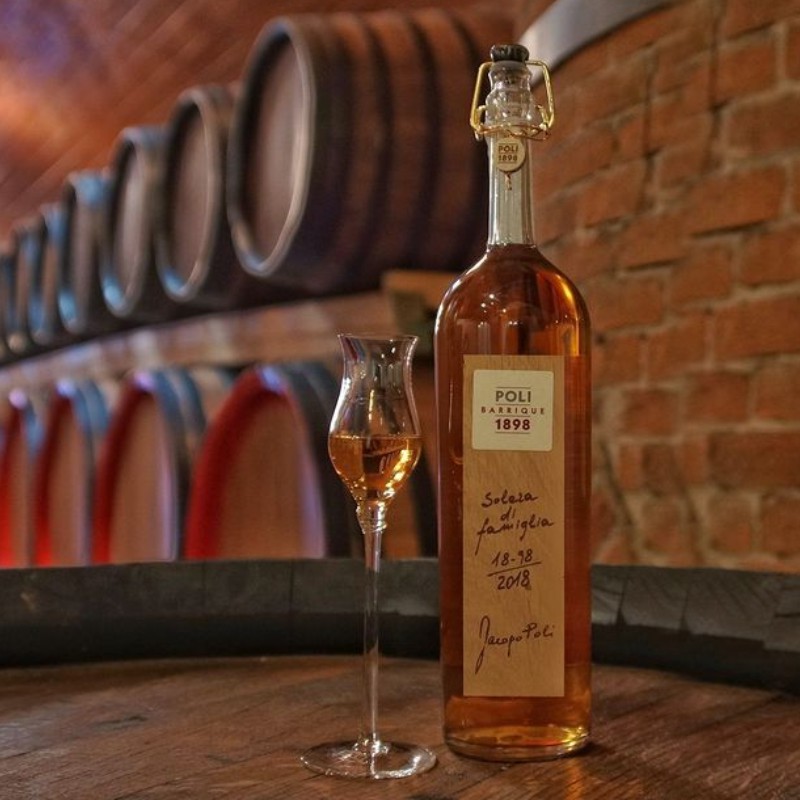The Aging of Grappa
Young Grappas have a crystalline appearance and are absolutely transparent. In contrast, Grappas aged in wood acquire colors ranging from light straw yellow to darker amber tones, depending on the aging time and the quality of the wood used. The most frequently used woods for making barrels are oak, ash, and chestnut. Less commonly used, but sometimes utilized, are cherry, acacia, and almond woods.
The Woods of Aging
Aged Grappas take on different aromas depending on the characteristics of the woods used. When the distillate rests inside a barrel, significant chemical-physical interactions occur. The wood is not a sealed wall that separates the liquid from the external environment: being porous, it allows the distillate to breathe, coming into contact with oxygen and oxidizing. Depending on how much the wood breathes, we will have different effects on the color and taste. The oxidation phenomenon increases the acidity sensation in the distillate, which will harmonize with other phenomena.
All distillates, once placed in a barrel, have a strong ability to extract substances contained in the wood: one of the most important is lignin. This and many other substances give unmistakable aromas over time, reminiscent of vanilla, tobacco, and sweet spices, up to intense and mature scents of cocoa, licorice, and cinnamon.
The Woods of Aging
Aged Grappas take on different aromas depending on the characteristics of the woods used. When the distillate rests inside a barrel, significant chemical-physical interactions occur. The wood is not a sealed wall that separates the liquid from the external environment: being porous, it allows the distillate to breathe, coming into contact with oxygen and oxidizing. Depending on how much the wood breathes, we will have different effects on the color and taste. The oxidation phenomenon increases the acidity sensation in the distillate, which will harmonize with other phenomena.
All distillates, once placed in a barrel, have a strong ability to extract substances contained in the wood: one of the most important is lignin. This and many other substances give unmistakable aromas over time, reminiscent of vanilla, tobacco, and sweet spices, up to intense and mature scents of cocoa, licorice, and cinnamon.


